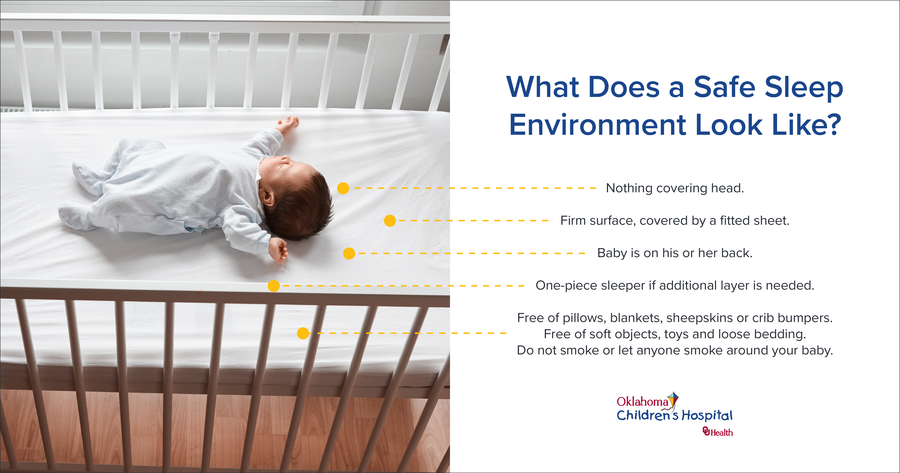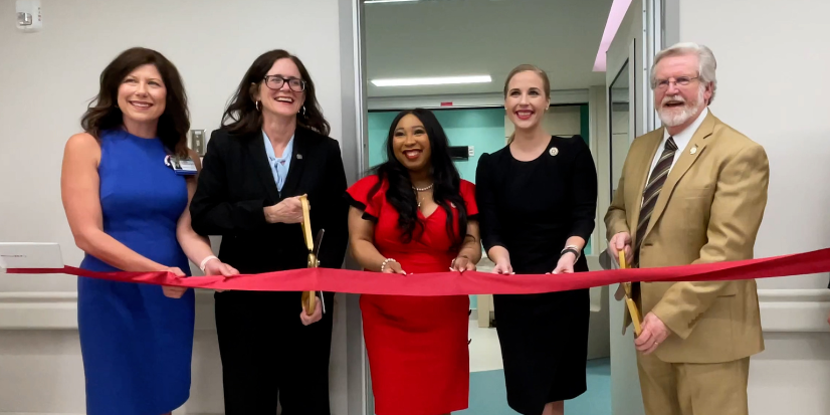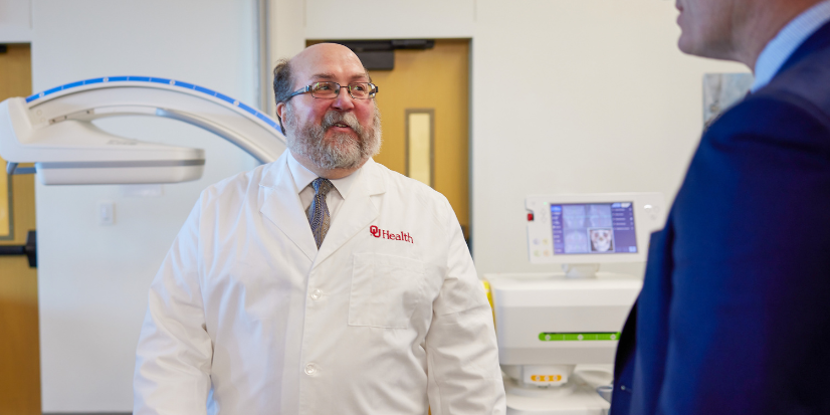Safe Sleep Guidelines to Protect Against SIDS

Whether you're still pregnant or your little bundle is already in your arms, you're likely spending a lot of time thinking about how and where your newborn will sleep.
Watching a baby sleep can be magical. As any new parent knows, you'd do just about anything to get your baby to sleep for extended periods. Of course, you want your baby to sleep soundly and be comfortable, but it's just as important that she sleeps safely.
Practicing safe sleep with your baby is one of the most important things you can do to keep them safe and protect them from sudden infant death syndrome (SIDS). Every parent needs to be familiar with safe sleep guidelines.
Learn about best practices before your baby's arrival and keep this blog handy for quick reference. Here's what you need to know so you and your baby can rest easy.
Where should a newborn baby sleep?
A helpful and eager big brother or sister will want to make your baby comfy cozy and cover them with blankets and lovies. This makes for an adorable scene, but don't let your baby sleep like this. In addition, while the older sibling is well-meaning, loading up your baby's crib even while they are awake can create an unsafe environment. So never leave your baby unattended. Here's what you need to know about where and how a newborn should sleep based on safe sleep tips for babies from the American Academy of Pediatrics (AAP).
Share a room, not a bed.
You can reduce the risk of SIDS by up to 50 percent when you share a room with your baby for the first six months of their life. And, of course, it makes nighttime feedings and diaper changes much more convenient for sleep-deprived parents.
You should only bring your baby into your bed to feed or comfort them. Then, place them on their back in their own sleep space once they’re settled. If you think you may fall asleep with your baby gently move them back to their own sleep space. Consider setting a short alarm when feeding to help you wake up if you fall asleep.
Bed-sharing isn't recommended for babies. Certain situations can make bed-sharing more dangerous, so make sure your baby has their own safe sleep space.
Put your baby to sleep in a bassinet or crib.
A crib, bassinet, portable crib or play yard that meets the standards of the Consumer Product Safety Commission (CPSC) are all safe sleep options for your newborn. Use a firm mattress with a tight fighting crib sheet. And as cute as it is when big sister loads up the baby bassinet with toys, be sure to take those out before laying your baby down to sleep. Soft objects, loose bedding, crib bumpers or anything besides a firm mattress and tight fighting crib sheet could increase the risk of suffocation.
Nothing else should be in the crib except for the baby.
Your baby should only sleep in their bassinet or crib — never a couch, armchair, infant pillow or lounger, bean bag chair, glider, swing, car seat or anything else. Babies may roll onto their side or stomach and turn their heads into the soft fabric, which can block their airways. Never leave your baby alone if they are propped up on a pillow or lounger, their head may fall forward and block their airway.
Always put baby to sleep on their backs.
The safest sleep position for baby is on the back on their firm sleep surface. This allows them to breathe easily. If your baby falls asleep in their car seat while driving, that's ok; just be sure to take them out and put them into their own safe sleep space. If your baby is comfortable rolling both ways (back to stomach and stomach to back), don't worry if they move while sleeping; they can stay on their stomach or side. By this stage, make sure they’re wearing a sleep sack to keep their arms out instead of a swaddle that restricts arm movement. This gives them the freedom to safely roll around.
Remember: BACK is BEST!
Keep your baby warm with a swaddle or a sleep sack.
Thick, fluffy blankets and pillows are not safe to have in the crib with your baby. If you're concerned about your sweet little bundle staying warm, opt for a swaddle or sleep sack. Newborn babies generally prefer swaddles because it makes them feel safe, snug, comfortable and warm.
Here are some tips to help create a more soothing safe sleep space for your baby:
Keep the room between 68℉ and 72 ℉
Use blackout curtains to keep the room dark
Use a white noise machine for soothing sounds
When to stop swaddling your baby?
When your baby can roll from back to stomach it may be time to STOP swaddling and START using a sleep sack. Sleep sacks provide warmth while keeping your baby's arms free. In general, your baby should be dressed in only one layer more than you are wearing.
Pacifiers can help reduce the risk of SIDS.
Studies show that pacifiers protect against SIDS, even if it falls out of the baby's mouth. If you're breastfeeding, wait until breastfeeding is established to introduce a pacifier. Your Oklahoma Children's Hospital lactation consultant can help you determine the right time to offer a pacifier. If you're not breastfeeding, you can offer a pacifier.
Some babies don't like pacifiers, so it's ok if your baby rejects them. If that's the case, you can try different brands and try to introduce them again later.
Once baby can roll over and move, it can be helpful to leave a pacifier in their crib so they can easily find one during naps or nighttime sleep.
Prenatal & Postpartum Safe Sleep Recommendations
You can ensure that your newborn has a safe sleeping space even before bringing your baby home.
These are some helpful tips to start your safe sleep practice while preparing for baby:
Don't smoke during pregnancy or after your baby is born.
Keep your baby away from smoke of any kind and avoid secondhand smoke.
Keep your home and car smoke-free.
Only use prescribed medications as instructed by your healthcare provider.
Don't use alcohol or recreational drugs during pregnancy.
Using alcohol or recreational drugs after your baby is born can impair your ability to care for your baby, putting your baby in danger.
Breastfed babies have a lower risk of SIDS. Feeding your baby breastmilk (even pumped milk in a bottle) helps reduce the risk of SIDS. The AAP recommends breastfeeding for at least the first 6 months . At 6 months you can introduce solids, and continue breastfeeding for 12 months or longer if you and your baby wish. If you have questions about breastfeeding, schedule a lactation consultation with the lactation experts at OU Health.
Schedule and go to all well-child visits and keep up with immunizations, which recent evidence suggests may have a protective effect against SIDS.
Do tummy time every day during your baby's wake period. This helps with the baby's motor development and strength. NEVER leave your baby alone.
Remember: back to sleep, tummy to play.
If you need help to quit smoking or struggle with substance use, talk with your OU Health doctor as soon as possible. Your medical team is here to help you and your growing family. Lean on the expertise and support you gain from the OU Health team.
Learn more about safe sleep and lactation services and breastfeeding available at Oklahoma Children's Hospital OU Health and check out the Newborn Babies: Getting Ready at Home — A Comprehensive Guide and Checklist as well as the Safe Infant Checklist from Safe Kids Worldwide.




